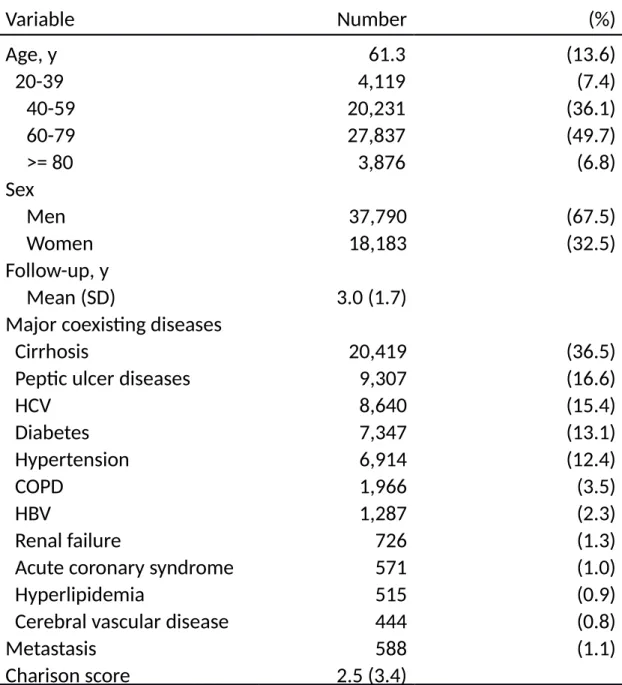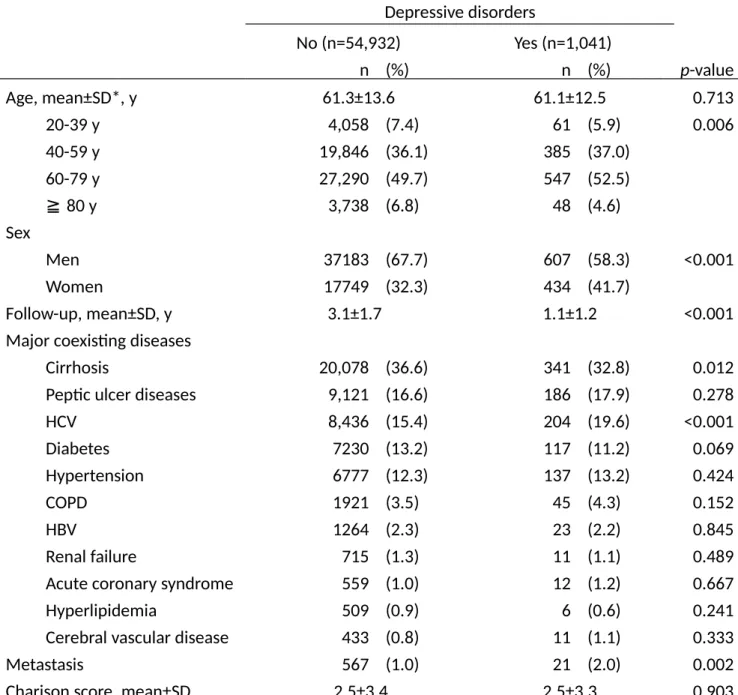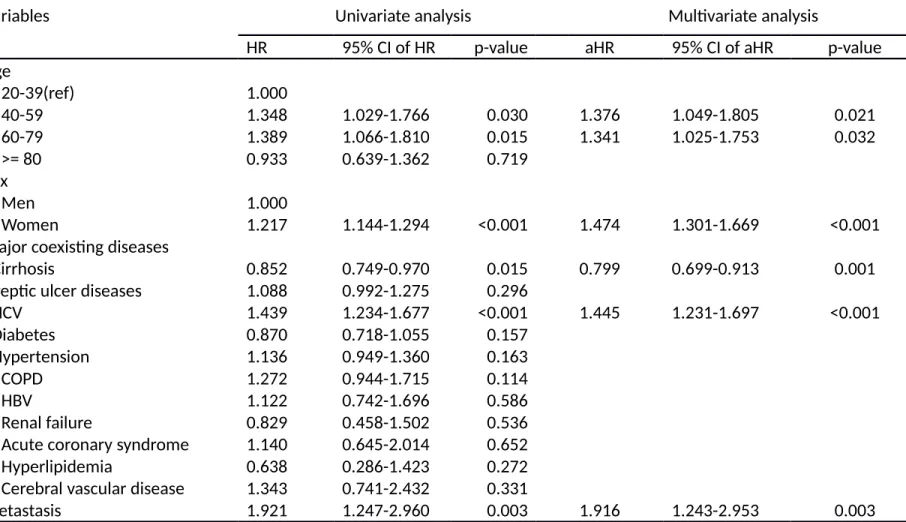Risk of developing depressive disorders following hepatocellular carcinoma: a nationwide population-based study
Running title: hepatocellular carcinoma (HCC) and depressive disorder
Chun-Hung Chang
1,2,3, Shaw-Ji Chen
43,4,5
, Chieh-Yu Liu
56*
1
Department of Psychiatry, China Medical University Hospital, Taichung, Taiwan, R.O.C.
2
Institute of Clinical Medicine, China Medical University, Taichung, Taiwan, R.O.C.
3
Department of Psychiatry, Mackay Memorial Hospital Taitung Branch, Taitung, Taiwan,Sunshine Psychiatric Hospital, Taichung, Taiwan, R.O.C.
4
Mackay Junior College of Medicine, Nursing, and Management, Taipei, Taiwan,Department of Psychiatry, Mackay Memorial Hospital Taitung Branch, Taitung, R.O.C.,
5
Institute of Medical Sciences, Tzu Chi University, Hualien, Taiwan,
56


